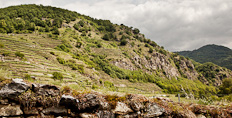- Delivery
- Price List
-
En Primeur
- 2024 Bordeaux latest news
- 2024 Bordeaux vintage report
- 2023 Burgundy releases
- 2022 Burgundy
- 2022 Burgundy vintage report
- 2022 Bordeaux vintage report
- 2022 Bordeaux latest news
- 2022 Bordeaux releases
- 2021 Burgundy vintage report
- 2021 Bordeaux latest news
- 2020 Bordeaux introduction
-
Archived vintage reports
- 2020 Burgundy vintage report
- 2019 Burgundy vintage report
- 2011 Brunello: Neil's trip report
- 2018 Burgundy: Colin's trip report
- 2018 Bordeaux preliminary report
- 2017 Burgundy: Colin's trip report
- 2016 Burgundy: Colin's trip report
- 2015 Burgundy: Colin's trip report
- 2013 Burgundy: Colin's trip report
- 2014 Bordeaux: Colin's trip report
- 2014 Burgundy: Colin's trip report
- Offers
- Unearthed
- New Listings
- Tastings
- Other Stuff
- Buying from us
- About Us
Austria/Hungary/Switzerland
Austria/Hungary/Switzerland

Used to be an empire all of its own, though I'm not sure if that's why the Great Uncorked Taxonomist has lumped them together. As wine countries they have relatively little in common, despite their both having taken the path less travelled by, in the words of the immensely smug poem. Each has its own varieties and styles.
Austria has Gruner Veltliner as its best known contribution to the world and a fantastically versatile one it is. In the hands of people like the Jurtschitschs and Pichlers it rises to heights not much found outside the inner circle of the -Montrachets. There is lovely Riesling too and Pinot Noir and Blaufrankisch for some top reds, while around the southern lakes delectably luscious, often botrytis affected wines are made.
Hungary is a country of two halves. Mad in the north is where Tokaji comes from, the Tokaj area is an ancient source of botrytis affected wines from Furmint and I was told recently has vineyards classified by monks in a way that the Cistercians of Burgundy used as a model. There are also some brilliant dry Furmints. Villany and Szeksard in the south have Kekfrankos (cf Blaufrankisch - see, now you know Hungarian for blue) and Cabernet Franc as well as super whites. None cheap though as you might naively have supposed.
- Kracher, AloisA trained chemist who was long involved in the pharmaceutical industry, Alois Kracher Jr changed course in 1986, returning home to work in the vineyards. And he did it with zeal. He created a new style of dessert wine in which fruit, finesse, and balance were more important than just sweetness. With his 1991 he caused quite a stir internationally. Today, he is one of the most successful producers of sweet wines in the world and one of the wine world`s best known figures. His wines are a class of their own.